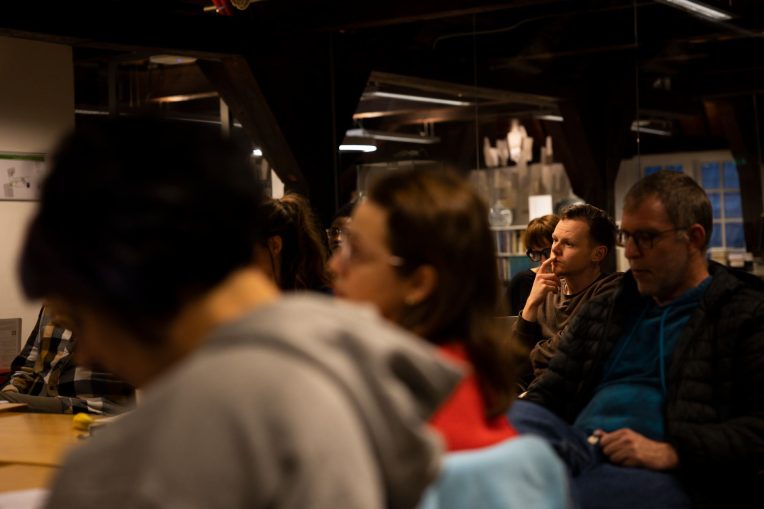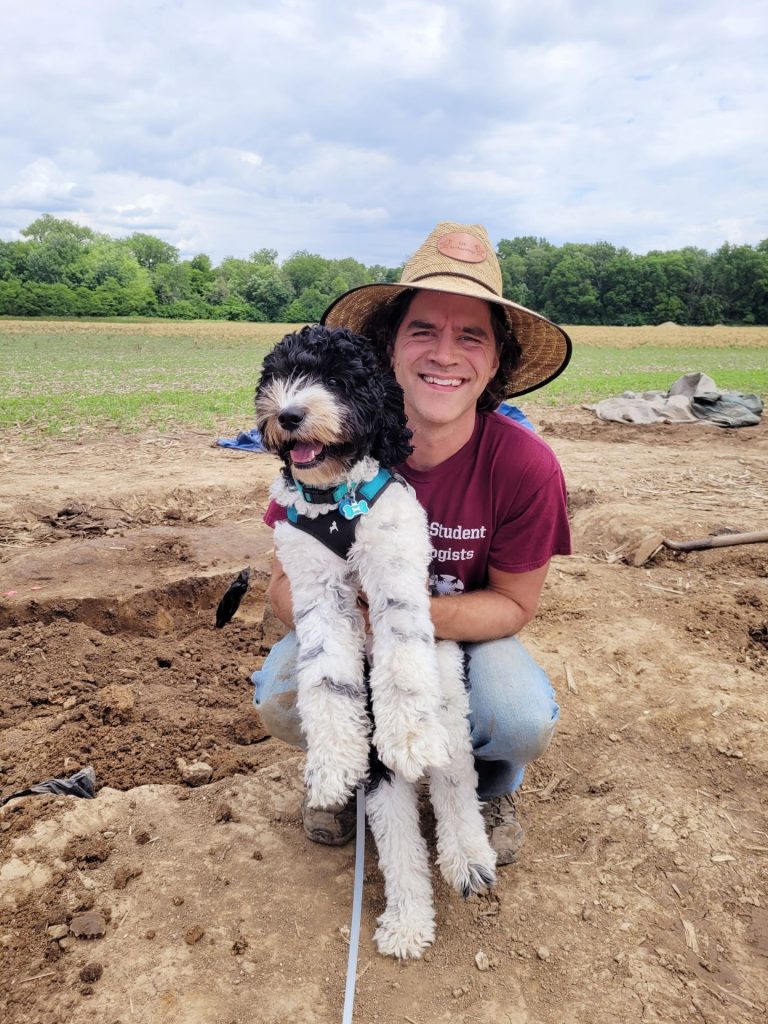Dr. Aaron Z. Pitluck: What ties together Amsterdam, Kuala Lumpur, Chicago, and Melbourne?
The idea of ‘having a sabbatical’ has become very trendy in the tech and non-profit sector. A sabbatical is an opportunity for someone to have paid time away from their job, not to go on vacation, but to delve into their occupation by withdrawing from the day-to-day and seeking to gain a broader perspective. Trendy or not, the idea of a sabbatical is quite old, with theological ties to Judaism and Christianity in which one withdraws from one’s day-to-day work on the seventh day (or in the seventh year) for the Lord. Between August 2022 and May 2023, I was away on sabbatical with more secular pursuits, but coincidentally my mind was never far from religion, and especially Islam.
My sabbatical began in Amsterdam with a fellowship awarded to me by the Netherlands Institute for Advanced Study (NIAS), a partner of the Royal Netherlands Academy of Arts and Sciences. On a personal level, NIAS was very much in the spirit of a sabbatical. They gave me an apartment, an office, and a stipend, and I was expected to do ‘slow science’ and think big thoughts; my only obligation was to attend the weekday lunches with the other fellows. They were an extraordinary cast of characters: primarily from the north Atlantic and across the social sciences, including a few scholars in the humanities, a journalist working on a book, and a Dutch artist. I worked on and published an article on how financial innovation happens (“The interpretive and relational work of financial innovation: A resemblance of assurance in Islamic finance.” Journal of Cultural Economy. Open access copy). I also submitted an essay for peer review to the journal, Economic Anthropology.

I also worked with the International Sociological Association’s Research Committee on Economy and Society to push forward an intellectual project called “Brokering Novel Concepts into Economic Sociology,” that we hope to publish as either a special issue or book. The conceit of the book is that each author is “brokering in” from another discipline or sub-discipline a concept that is undertheorized or absent in economic sociology. I organized three workshops for our authors and I found their work fascinating and thought-provoking.
But more importantly, I did a lot of thinking and writing draft chapters for a new book, tentatively titled Making finance meaningful: Co-producing Islamic banking and finance in Malaysia. Drawing on my ethnographic interviews in Kuala Lumpur, I am writing a book that contributes to interdisciplinary conversations that seek to distinguish empowering from exploitative finance and to contribute to understanding how to alter the trajectory of finance toward the former. You can read more at the NIAS website.
Moving to the Netherlands was fascinating; I did so with my 14-year old son and my spouse. My son enrolled in a Dutch public school designed to help immigrants quickly learn academic Dutch sufficiently to be put in a mainstream curriculum. His peers were from all over the world—a United Nation of kids where everyone was from a different country, except for a large cohort of Ukrainian kids escaping the war. I was amazed at how quickly he acquired Dutch. My spouse worked from her Dutch home on Zoom. Before and after work, I would bicycle everywhere; exploring every street and alley of Amsterdam. Nearly every weekend our family traveled somewhere, but almost always to cities, towns and villages in the Netherlands. It is such a small country; about the size of Rhode Island or Delaware. But since my family and I have lived in Europe before (Hungary and Germany), we primarily focused our attention on tourism in the Low Countries.
We then moved back to the U.S. where I held a visiting scholar appointment with the Sociology Department at the University of Illinois at Chicago. They are a fascinating department, with a shared commitment to politically-impactful, community-engaged public sociology, and so a very helpful place to be writing a book about global social change. Here I proudly offer a tip of the hat to Tara Williams and Lisa Berube, two Sociology Redbird alumni who went above and beyond to make me feel at home in their department. I’ve learned much about community in Amsterdam and Chicago, and I look forward to bringing these ideas and experiences back to Normal.
Lastly, at the end of the sabbatical, I’ve devoted substantial time to service and teaching. I was the program organizer for the Economy and Society Research Committee at the International Sociological Association (ISA RC02) in Melbourne, Australia, where I organized a week-long conference as well as a day-long pre-conference for junior scholars. At the ISA, I stepped down as president of ISA RC02 and stepped up to join the Executive Committee of the ISA. I also devoted some time to rethinking and entirely revising one of my favorite classes to teach: Introduction to Sociology: Thinking Allowed.
I’m grateful that academia and the taxpayers of Illinois have enabled our faculty to take sabbaticals. Based on my experiences, I suggest that such an investment isn’t money spent frivilously and gormlessly. Rather, I feel certain that the experiences I’ve had over the past 15 months will reverberate far beyond me and my family to my scholarly community, to my department, and to hundreds of students who I will mentor before my next sabbatical in 2030.
Dr. Logan Miller: A ‘dig’ into our past, present and future
I had the distinct pleasure of taking my first sabbatical during fall semester 2022. The historical origin of a sabbatical describes a period of rest, and I suppose that is the main descriptor that captures the day-to-day focus on my sabbatical. But this wouldn’t be possible without the support of the college, department and colleagues who picked up the slack in my absence from teaching. For this I am exceptionally grateful. It has allowed me to focus on some projects that have been percolating for a number of years. Here’s a quick rundown of a few.
One project relates to the student-centered archaeological field school site of Noble-Wieting. Students and colleagues from the Illinois State Archaeological Survey have been working at the site since we completed the geophysical survey in 2016. We are finally starting to make sense of some things while an infinite number of questions admittedly remain unanswered. My colleague Dr. Jacob Skousen (now at Western Illinois University) and I organized a symposium on our recent work at Noble-Wieting for the Midwest Archaeological Conference in La Crosse Wisconsin. ISU’s very own Dr. Abby Stone, along with her student co-author and anthropology graduate Kelly Kennedy, presented an intriguing paper about strontium levels in elk and deer remains from the site. We were also honored to have many of our Tribal partners participate as co-authors on several papers. The overall focus of the symposium was the role of community making and coalescence among the residents of Noble-Wieting in the face of the opportunities and challenges they faced both locally and further afield in 14th century Illinois.
Another sabbatical outcome was an article that resurrected my undergraduate and master’s thesis projects, which in turn were outgrowths of my first archaeological fieldwork experience at the Moorehead Circle, an 1,800-year-old ceremonial “woodhenge” in southwest Ohio. Dr. Bob Riordan, my undergraduate archaeology professor, and I ran some protein residue tests on stone tools from the site that identified the presence of canine and bear blood. I once again roped Abby into examining the faunal remains from the site, and she found bear and wolf bones, notably modified teeth, in the assemblage. We see this as evidence that people were making objects like masks and other personal ornaments from bear and wolf at the site, making the Moorehead Circle one of an exceedingly small number of places where the manufacture of these important ceremonial objects has been identified. The article is available open access thanks to Milner Library.
Sabbaticals also offer opportunity for data collection in anticipation of future research projects by providing some release from immediate deadlines. As such, I made a number of trips to the Illinois State Museum’s Research and Collections facility in Springfield to collect data on artifacts excavated in the 1970s from two 2,000-year-old residential sites in southern Illinois. These sites date to the Middle Woodland period (100 B.C.-A.D. 400) where a broad pattern of monumental earthen construction, material symbols, and exchange that archaeologists often refer to as Hopewell emerged among the Indigenous peoples of eastern North America. Most archaeological research into this period has focused on mounds and other ceremonial sites that were only visited during certain times of the year, leaving our knowledge of day-to-day life less developed. Luckily, the data to help alleviate this issue has already been excavated and has just been waiting to be examined in more detail. The hundreds of boxes of materials and records from Crane and Loy are primed for student projects now that I have completed some of the behind the scenes work to help put these into context.
Sabbatical also happened to correlate with some logistical changes as my office is now on the third floor amongst the rest of the SOA faculty. The microscope has its own new office that will hopefully make it more accessible to student researchers with accelerated Master’s student Sarah Patterson and her dismembered deer bones first on the list. This is a reminder that sabbatical can serve as a bit of a distraction from what really matters, our incredible students! Luckily graduate students Colt Graves and Emily Cring kept me connected through our chats. And undergrad anthropology major Julian Marvel put together a successful Firebird award grant from the Office of Student Research that allowed him to take the stone axes from Noble-Wieting to the Field Museum in Chicago for elemental analysis using their X-Ray florescence machine.



